Choosing the right insulation between technical opportunities and practical constraints.
Choosing an insulation material requires evaluating very different factors:
- Is it a new or an existing building?
- Are the structures to be insulated traditional, breathable or modern block and concrete?
- Is the insulation required internally or externally?
- Is the structure to be insulated an on-grade slab or is it a foundation?
- What type of room is to be insulated? A house or an office?
- Is the plan to utilize solutions provided by technology for an environmentally sustainable intervention?
Insulation in buildings is an essential element of contemporary construction, playing a crucial role in energy conservation and efficiency. It considerably decreases the expenses for heating and cooling, improves comfort levels, and aids in reducing a building's environmental impact by cutting down CO2 emissions. Moreover, insulation is fundamental for soundproofing and fireproofing, making it an essential attribute of both residential and commercial edifices to increase the global resilience of the building.
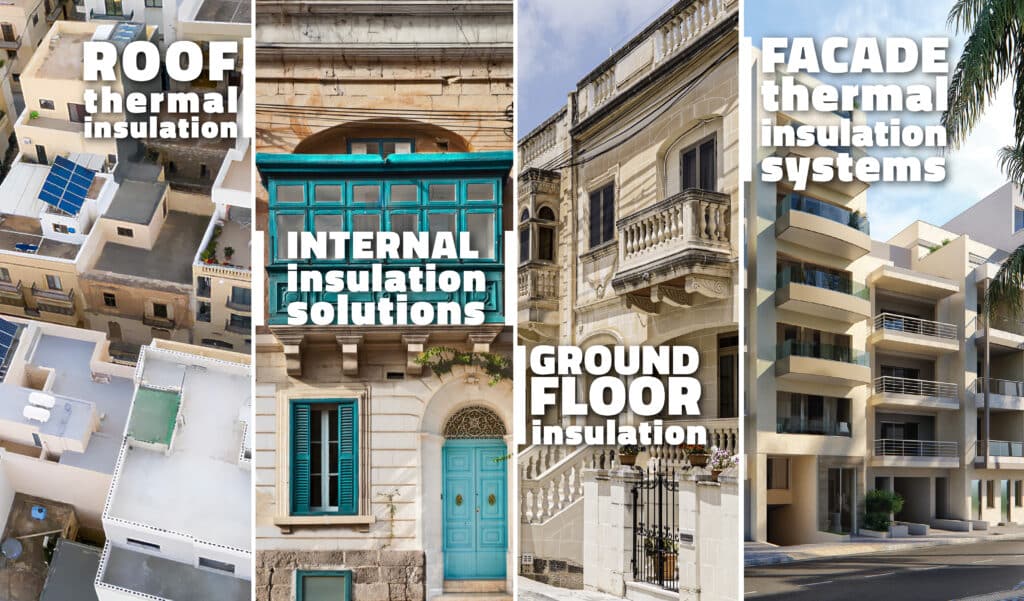
Understanding insulation materials
In an energy renovation project, choosing the appropriate insulation material is crucial and should consider several key factors:
- Thermal conductivity λ;
- Specific thermal capacity;
- Volume mass;
- Fire resistance;
- Water vapour diffusion;
- Sound absorption coefficient;
- Thermal inertia.
Obviously, Thermal Conductivity is the most relevant physical property; an insulating material is better the lower its thermal conductivity value (λ) is. However, there are many technical characteristics of insulation materials that make some of them suitable for certain applications and not for others. These derive mainly from the nature of the product, the raw materials from which it originates and the manufacturing process.
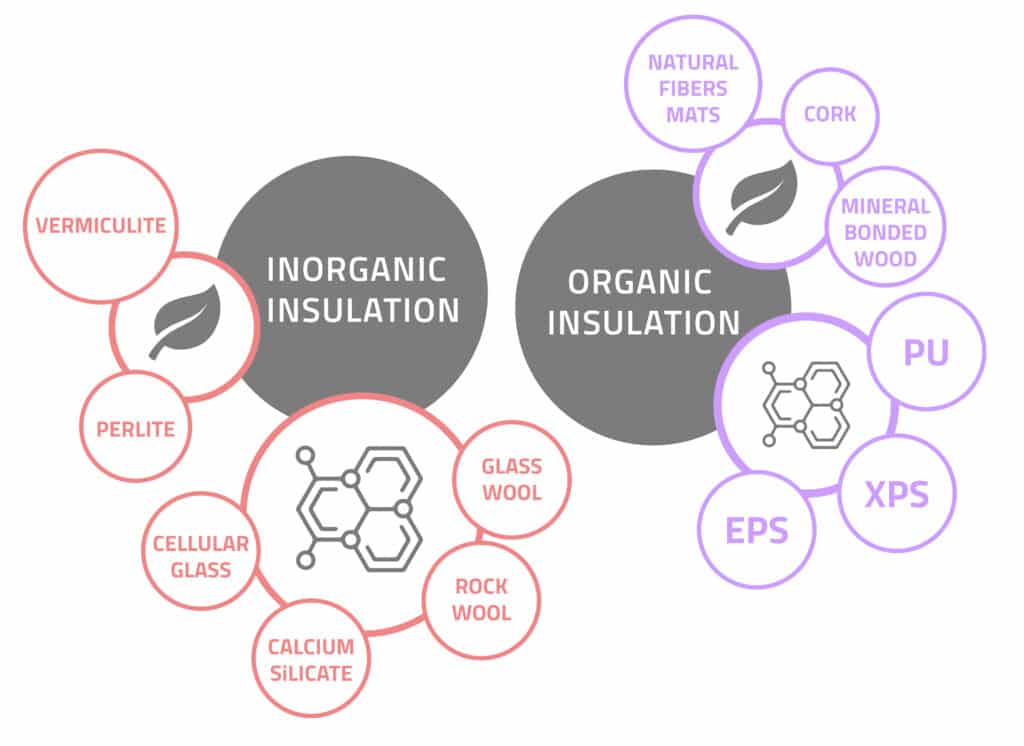
Insulating materials can be subdivided into two macro-categories depending on their composition: organic insulation materials and inorganic insulation materials, which are further subdivided into two types depending on their origin: natural and synthetic, as outlined in the above chart.
The ideal insulation against heat, cold and noise.
Regarding thermal conductivity, synthetic materials seem to be more effective, yet plant-based products, particularly mineral fibers, also show good performance. In terms of thermal insulation, expanded perlite and other granular mineral materials provide mediocre results, thus they are infrequently used as primary insulating material.
Conversely, during summer, materials with low specific weight such as organic, synthetic, and mineral wool fibers exhibit poor heat storage capabilities, whereas plant materials, like wood fiber and cork panels, perform better.
In terms of acoustic properties, fibrous materials and wools, whether mineral, plant, or animal-based, demonstrate low dynamic stiffness, making them suitable for impact sound insulation or as fillers in cavities. Organic-synthetic insulators, however, are not considered effective for acoustic insulation.
Thermal conductivities chart: organic and inorganic insulation materials
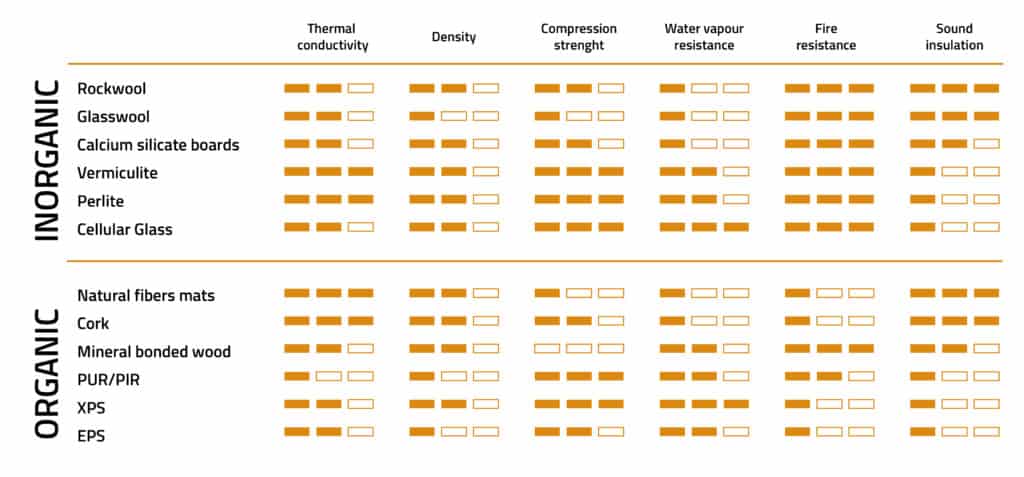
The table above illustrates the main characteristics of the various insulation materials grouped according to their organic or inorganic origin.
The enhancement of thermal resistance is contingent on the variety of materials and their applied thickness to the structure needing insulation. With identical thicknesses, the degree of thermal resistance varies. Hence, it is crucial to recognize that varying thicknesses are necessary for different insulating materials to attain comparable thermal efficiency. For instance, 10 cm of polyurethane offers the same thermal resistance as 18 cm of wood fiber.
Eyes on the sustainability
When discussing the greening of our homes, it is important to remember that the carbon footprint includes not only the emissions we produce (and we are going to produce in the future) but also those already embedded in every material and technical installation we implement.
Over the past decade, numerous authoritative scientific studies have pointed out the negative effects that synthetic materials can have on the state of the environment. Polystyrene, EPS and XPS foam are some examples of insulation materials made from a variety of petrochemicals obtained by fossil-fuel based extraction methods and energy-neutral processing. Other popular home and building insulation materials, such as mineral wool and glass, require a considerable amount of energy to produce but can be recycled more efficiently and are derived from mineral raw materials. In most cases, environmental friendliness also depends on the availability of non-renewable resources. Conventional insulation materials, if improperly disposed of, can also become very harmful to the environment and can take decades or centuries to decompose naturally.
At Attard Bros Construction Materials, we offer an extensive selection of insulation materials tailored for both the civil and industrial architecture fields, emphasizing the retrofitting which represents a very sensitive domain considering the Maltese architectural heritage.
Our focus is now on innovative products that deliver superior energy efficiency and environmental sustainability. We have recently expanded our product line to include natural and sustainable alternatives, which could replace traditional insulation materials. Although the properties and capabilities of these new materials are under investigation, we believe it is imperative for our market to adopt sustainable practices, especially the recyclability of materials at the end of their lifecycle in the construction ecosystem.

Soprema XPS
Extremely resistant to moisture and with a huge compressive strength, XPS is the perfect insulation material for inverted roofs and foundations. Sopra XPS is resistant to mould, lightweight and recyclable, and also benefits from BREEAM A rating.
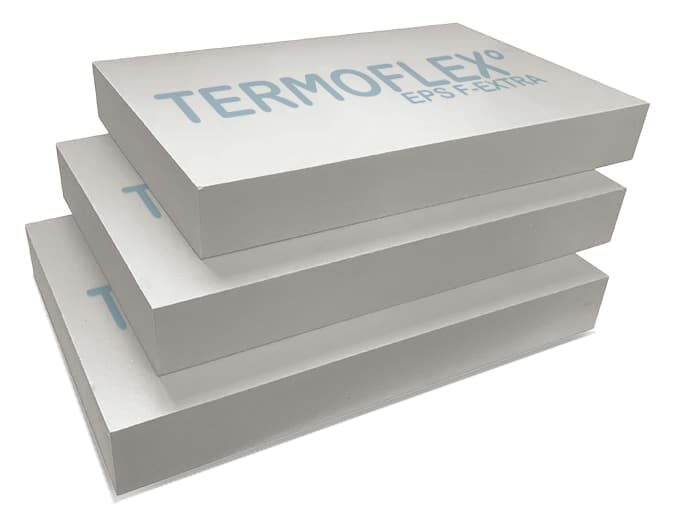
Termoflex EPS
Known to be a cost-effective product, EPS offers excellent insulation and a low diffusion resistance (µ) of 30-70, so it is more breathable. EPS is non-toxic, contains no CFCs or HCFCs. It does not support fungal or bacteriological growth and can easily be recycled.
BRE Environmental Profiles give EPS a score of 0.043 over a sixty year life span, far better than many alternative materials.
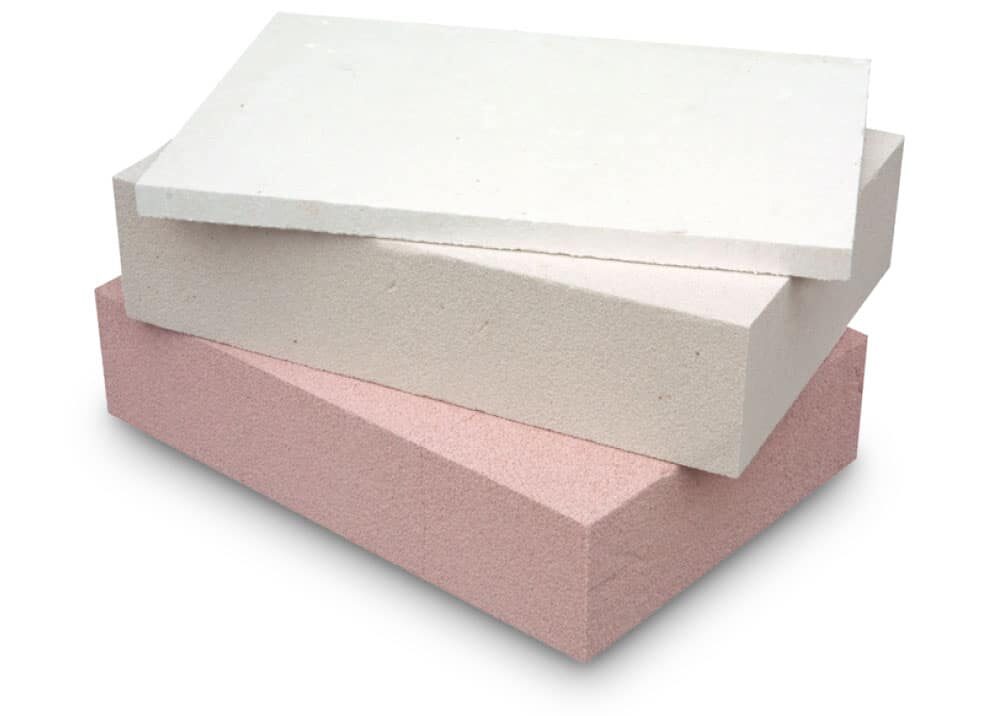
Bacchi
Calcium Silicate Insulation
Calcium silicate insulation is the ideal solution for exterior or interior applications due to its special breathability, which makes it ideal for managing humidity in domestic spaces. Totally recyclable and made from natural prime materials it is VOC free, LEED and EPD compliant. It is also a fireproof material Euroclass A1.
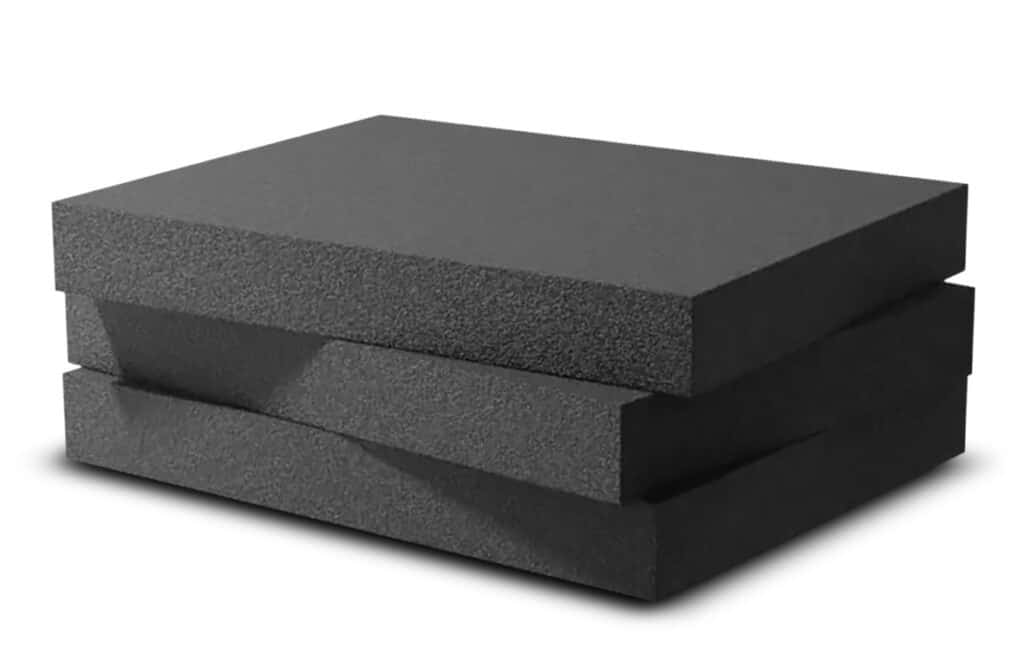
Glapor Cellular Glass
Glapor is a plastic-free and eco-friendly insulation material, providing optimal insulation for climate-neutral buildings and fully recyclable at end-of-life.
Due to glass' natural properties Glapor is 100% damp-proof, fireproof and totally exempt from any decay of technical properties, reliably safeguarding the energy rating of your building for generations.
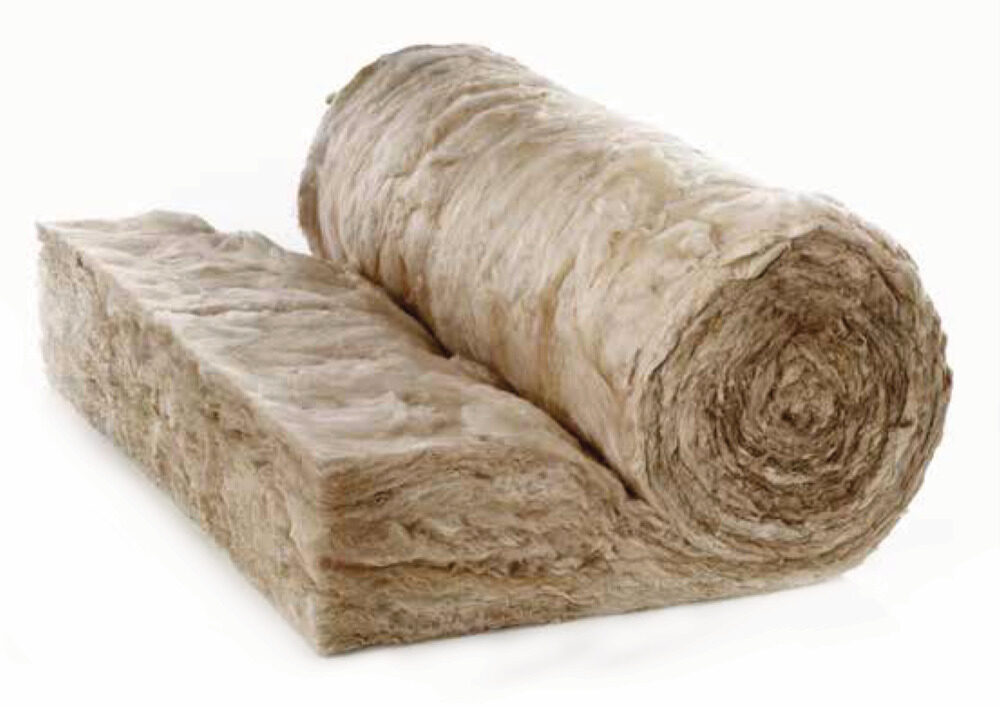
Fibrous Insulating Materials
We have fibrous insulation mats and rolls from both mineral and vegetal origin. Rock wool and glass wool are the ideal solution for making effective insulation against noise or fireproofing structures and infrastructures.
Natural plant fibre-based mats are an optimal solution for green building due to the very low environmental impact production process and their complete recyclability.

Reach us for information on +356 2141 5332


